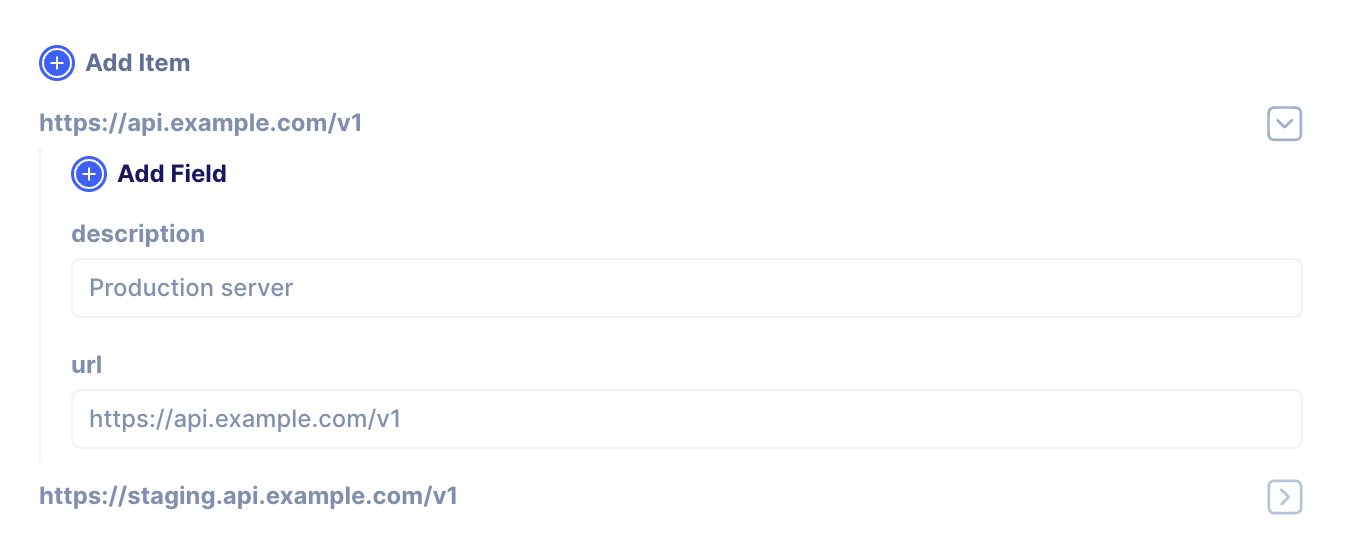Server(s) in API
List of configured servers. The servers object is used to define the base URL(s) for the API. This object allows you to specify one or more server URLs where the API is hosted or accessible. The servers object is often included at the root level of the OpenAPI document.
Here's an example of using the servers object:
Code-based configuration
openapi: 3.0.0
info:
title: Sample API
version: 1.0.0
servers:
- url: https://api.example.com/v1
description: Production server
- url: https://staging.api.example.com/v1
description: Staging server
paths:
# ...
Visual configuration

In this example:
- The
serversobject contains an array of server objects, where each object has aurlproperty indicating the base URL of the server. - Each server object may also have an optional
descriptionproperty providing additional information about the server.
Here are some key considerations and options related to the servers object:
Multiple Servers:
You can define multiple servers if your API is accessible from different base URLs. This is useful, for example, when you have separate servers for production and staging environments.
servers:
- url: https://api.example.com/v1
description: Production server
- url: https://staging.api.example.com/v1
description: Staging server
Variables in Server URLs:
Server URLs can include variables that can be substituted at runtime. Variables are specified using curly braces
{}.servers:
- url: https://{username}.api.example.com/v1
description: User-specific server
Default Server:
If no server is specified, clients are expected to use the default server. The first server in the
serversarray is considered the default unless overridden.servers:
- url: https://api.example.com/v1
description: Default server
Variables Resolution:
- The variables used in server URLs can be resolved at runtime based on client or user input.
Server-Level Security:
Security schemes defined at the server level apply to all operations within that server unless overridden at the operation level.
servers:
- url: https://api.example.com/v1
description: Production server
security:
- apiKey: []
- url: https://staging.api.example.com/v1
description: Staging server
security:
- apiKey: []
Including the servers object in your OpenAPI document helps provide clarity about where the API is hosted and how clients should interact with it. This is especially important when dealing with APIs that are deployed across different environments or have variations in their base URLs.
Reference: https://swagger.io/docs/specification/api-host-and-base-path/